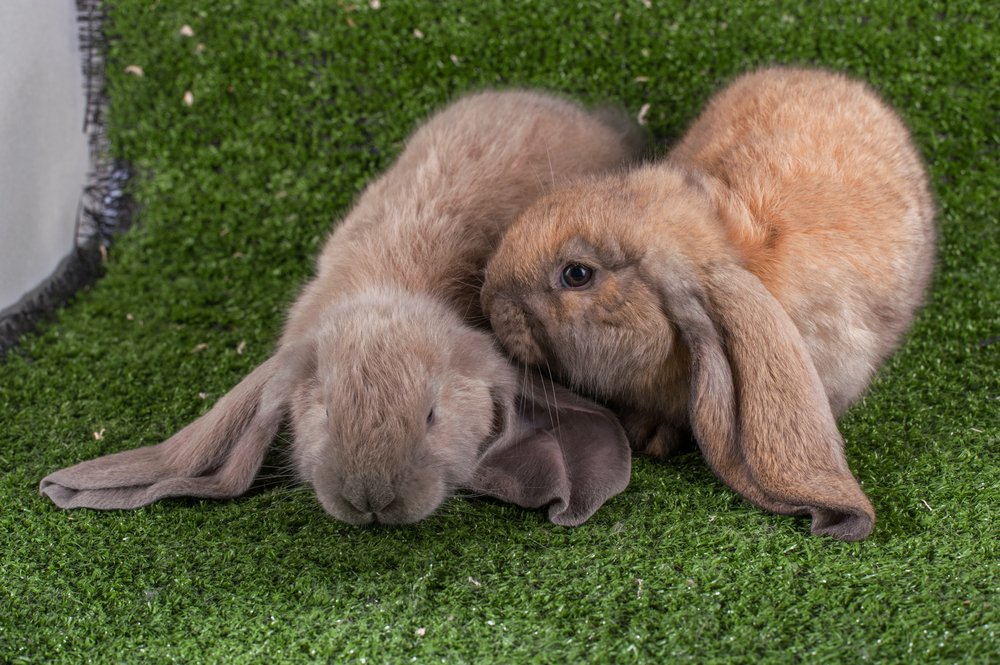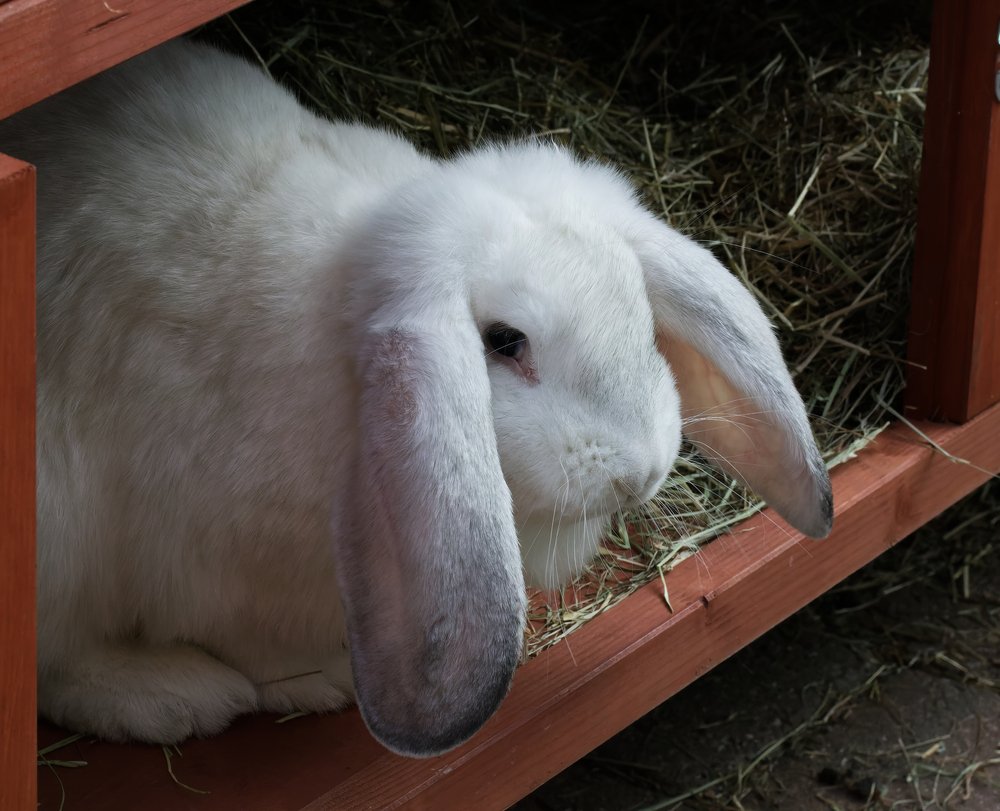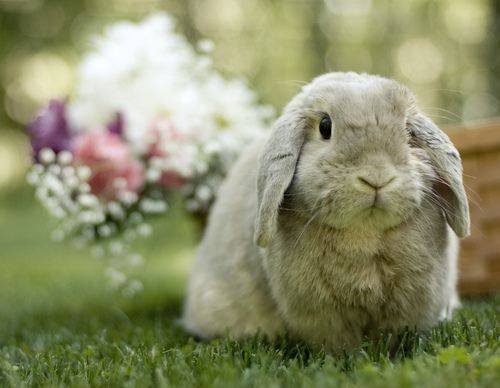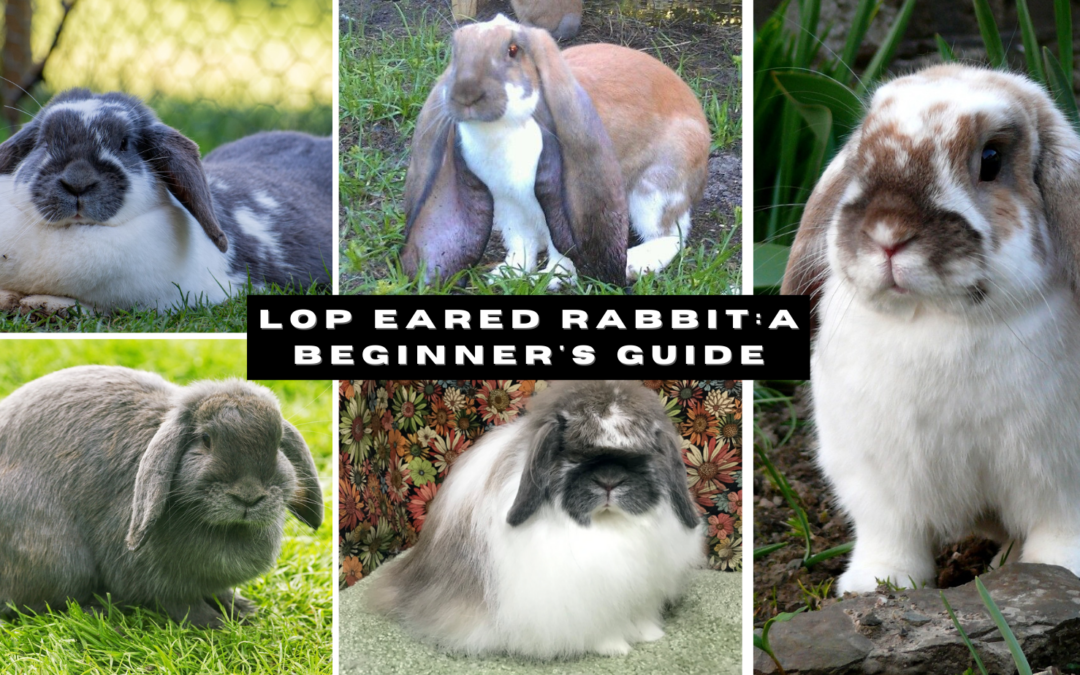A lop-eared rabbit is a famous household pet in the United States nowadays. Who could ever resist its big, furry ears and friendly personality? This bunny is suitable for a beginner, but like any other rabbit, it also needs special attention. Its famous long, downward ears require regular grooming to prevent dirt build-up. There are different breeds of lop bunnies that you can choose from. Here is a guide to lop rabbit breeds to help you out!
Five Popular Lop Rabbit Breeds
The American Rabbit Breeding Association (ARBA) recognized only five breeds of lop bunnies. They are the American Fuzzy Lop, English Lop, French Lop, Holland Lop rabbits, and Mini Lop. Learn more about these breeds below:
American Fuzzy Lop
The American Fuzzy Lop has a compact body weighing up to 3.5 to 4 pounds. Although its coat is only two inches long, it can be turned into yarn. Its fur color can be white combined with chinchilla, squirrel, opal, lynx, and chestnut. But some have pure white coats with markings.
American Fuzzy Lop rabbits usually have calm and quiet personalities. While they won’t excel at agility, they can learn a few commands and tricks. Their coats need regular maintenance but are not quite so long and full as their larger Angora cousins. Not only does grooming help keep them clean and free of mats, it also prevents digestive upset that can occur when they clean themselves often.
For a quiet, peaceful pal, the American Fuzzy Lop, also called an AFL or just Fuzzy Lop, might be among your first choices.

American Fuzzy Lop
English Lop
Initially bred for exhibition, English Lop is famous for its floppy ears reaching up to 23 inches. This lop eared bunny can grow up to 9 to 11 pounds. Its color may include black, fawn, white, or gold. An English Lop can live up to five to eight years.
We found the English Lops to be the clowns of our pets. They would hop into boxes, then pop up, as if playing Jack-In-The-Box. Those ears do get in the way of fast hopping, but they don’t seem to mind.
One thing to keep in mind is that since the ears drag, they are prone to injury. Be careful of where they are kept and check the ears for cuts and sores regularly.

Baby English Lops
French Lop
French Lops are not popular as other lop rabbit breeds. It is because of the food and space requirements that only a few rabbit owners can provide. Although this bunny can grow up to 11 pounds and sometimes a bit more, it is surprisingly gentle and docile.
While they might be a bit larger than some want for a rabbit pet, the French Lop can be quite cuddly. In fact, they enjoy lap time while you watch your favorite show.

French Lop Rabbit
Holland Lop
Holland lop can be your long-time companion since it can live up to 7 to 14 years. Its compact body can only reach up to two to four pounds. Besides its fur-coated ears, owners love its glossy fur. Its coat only requires weekly or bi-weekly grooming. This breed can only have one color, or it can also have two or more colors with patches.
Ready for a companion with a little spunk? Consider the Holland Lop. Creative little clowns, they provide their share of entertainment. However, they also enjoy people time and will try to stay close to you, whether you are watching tv or cleaning the house.
Even with the lop ears, these cute little bunnies can be quite the athletes and often take to the agility course with great enthusiasm.

Holland Lop
Mini Lop
A Mini Lop can only grow up to only 6.5 pounds. The floppy-eared rabbit has wide color variations. These include broken, agouti, printed white, self, ticked, shaded, and wide band. Unlike other breeds, the temperament of mini lops may differ.
With a personality between docile and comical, your Mini Lop might surprise you with his antics. Like other lops, they adore their people and will try to stay close whenever possible. Some families find their size to be quite ideal for younger children, too.

Mini Lop rabbit
Other Lop Rabbit Breeds that You Should Know
Although ARBA does not yet recognize the breeds below, you may still want to consider them as your new pet. Here are other lop rabbit breeds that you should know:
Velveteen Lop
A crossbreed of the English Lop and Mini Rex Rabbit, a Velveteen Lop has a mandolin body that can weigh up to 5 to 6.5 pounds. Its distinguishing feature is its 15 inches ears hanging loosely, facing its head. This lop-eared bunny also has a lustrous and smooth coat. Its fur color can vary from grey to brown. If you want to keep Velveteen Lop, ensure that you have enough space.
German Lop
Because of its long lifespan, a German Lop is an ideal lop-eared rabbit for senior citizens and new owners. Its well-built body can grow up to 6 to 8 pounds. Despite its large body, this floppy-eared rabbit is affectionate towards its owner. Its coat is typically dense and normal-length; however, it only requires minimal grooming. Although ARBA does not recognize it, it’s on the British Rabbit Council (RBC) list.
Cashmere Lop
Bred in 1980, Cashmere Lop became popular on shows during the mid-1990s. Because of its popularity, rabbit owners established The National Cashmere Lop Club. The compact body of the Cashmere Lop can grow up to four to five pounds. Even though it has a thick coat, it doesn’t require tedious grooming since it’s not wooly.
Plush Lop
The plush lop is a new breed with two varieties: the Miniature and Standard. This adorable bunny can only weigh up to two to six pounds. It has a silky coat that can grow up to ½ inch. The colors of the fur may vary from blue, chocolate, gray, harlequin, lilac, white, and black.
Common Health Issues of Lop Rabbits
Although most lop rabbits are easy to take care of, they may suffer health issues. Because of their long ears, they tend to experience more ear diseases. Aside from that, their associated skull shape also leads to dental problems. Before getting any floppy eared rabbit, you must know its health issues. Here are some of them:
Ear infections
A lop eared rabbit tends to have a narrower ear canal than other rabbit breeds. Because of this, it is more difficult for the air to flow and remove the earwax. Once this happens, microorganisms will grow into the earwax, leading to ear infections. Some of the common bacteria are Staphylococcus aureus, Streptococcus spp, and Pasteurella multocida.
Here are some of the symptoms of ear infections:
- Dizziness
- Loss of balance
- Frequent ear or head-scratching
- Appetite loss
- Inflammation around the ear
Call the veterinarian immediately if you have noticed the symptoms mentioned above. The vet will administer an antibiotic treatment plan if it’s from bacteria. If not, they may use antifungal medication or anti-parasite injection. The lop-eared bunny may need hospitalization and surgery if the condition is severe.
Malocclusion
Malocclusion is the incorrect position of the teeth that leads to their overgrowth. This dental issue is common to all rabbit breeds, including lop rabbits. The overgrowth of the teeth results in damaged gums, cheeks, and tongue. The rabbit may suffer from drooling and weight loss. You may also notice mouth sores and eating difficulty if ignored.
The common cause of malocclusion is the lack of roughage in the diet. Rabbits need the right amount of hay and fiber to wear down their teeth. Another factor is insufficient vitamin D . Unfortunately, this condition may also be hereditary, especially to lop-eared rabbits.
Ways to Take Care of Lop Rabbits
A healthy lop eared bunny requires grooming and a proper diet. Although every breed may differ, here are some general reminders on how you can take care of lop rabbits:
Grooming
To keep lop rabbits, you must give special attention to their ears. Compared to other breeds, their ears tend to accumulate dirt faster. Using a soft and moist cotton cloth, wipe the inner and outer ears of the bunnies. Do this regularly to prevent any development of bacteria on the rabbits’ ears.
Domesticated rabbits cannot file their nails on rough surfaces. Hence, it is the task of the owner that their pets’ nails be trimmed regularly. It is vital to prevent the bunnies from scratching themselves or their owners. There are available smaller nail clippers in the market designed for pets.
Besides trimming, you will also have to brush the fur of lop rabbits. You will need a soft-bristled brush because the rabbits’ skin is very sensitive. If the coat is short, you can brush it at least once weekly. If your lop rabbit is shedding hair, you must brush it regularly. It prevents your rabbit from ingesting its fur.

Using a Grooming Glove
Proper Diet
Like any other rabbit, a floppy-eared rabbit also has a sensitive stomach. So, you better watch out when feeding these adorable creatures. Hay makes up 80% to 90% of the rabbit’s diet. There are different kinds of hay that you can feed to your rabbit. These fibers provide good digestion and keep the rabbit’s teeth healthy and trim.
Besides hay, you can also give your floppy-eared rabbit pellets, vegetables, and fruits. However, they must be given in small to moderate amounts. Check first with the vet what fruits and veggies you can only give to your bunny.

Munching on hay
Frequently Asked Questions
How will I know if my bunny is a lop rabbit breed?
To know if your rabbit is a lop-eared rabbit breed, check if its ears are up or down and if they are big or small. If the ears of your rabbit fall on the side of its head, you can compare its features to the American Fuzzy Lop. You can also check if it’s an English Lop, French Lop, Holland Lop, or Mini Lop.
Are lop bunnies ideal for families with children?
Absolutely! Lop bunnies are friendly and affectionate. They rarely show aggressive behavior towards their owners. But in handling the bunnies, teach your children how to do it properly.
What is the lifespan of lop rabbits?
The average lifespan of lop rabbits is five to seven years. However, there are lop rabbit breeds that can live longer. Some of these are Holland Lop and German Lop.
What is the biggest breed of lop rabbit?
French lop is the largest breed of lop-eared rabbit. It can weigh up to 11 pounds. Despite its large size, it is also one of the most docile and gentle bunnies. But most owners have difficulty caring for this breed because of the space it requires.
What is the average price of a lop rabbit?
The average price of a lop-eared bunny may range from $20 to $400. To give you an idea, an American Fuzzy Lop may be worth $175, while a Holland Lop may range from $50 to $200. On the other hand, the Mini Lop may cost up to $150 to $250.
Is a Lop-Eared Rabbit Your Next Pet?
A lop-eared rabbit comes in different breeds. Each differs in personality, features, and needs, but all are inarguably adorable. However, you must select the breed that is also suitable to your budget, environment, and time. Some are high-maintenance, while other only needs a little attention.
Besides grooming and proper diet, these breeds also need tender love and care. Only through you can they grow healthy and happy. It is a big responsibility to take care of rabbits, but the joy they bring is worth it.



